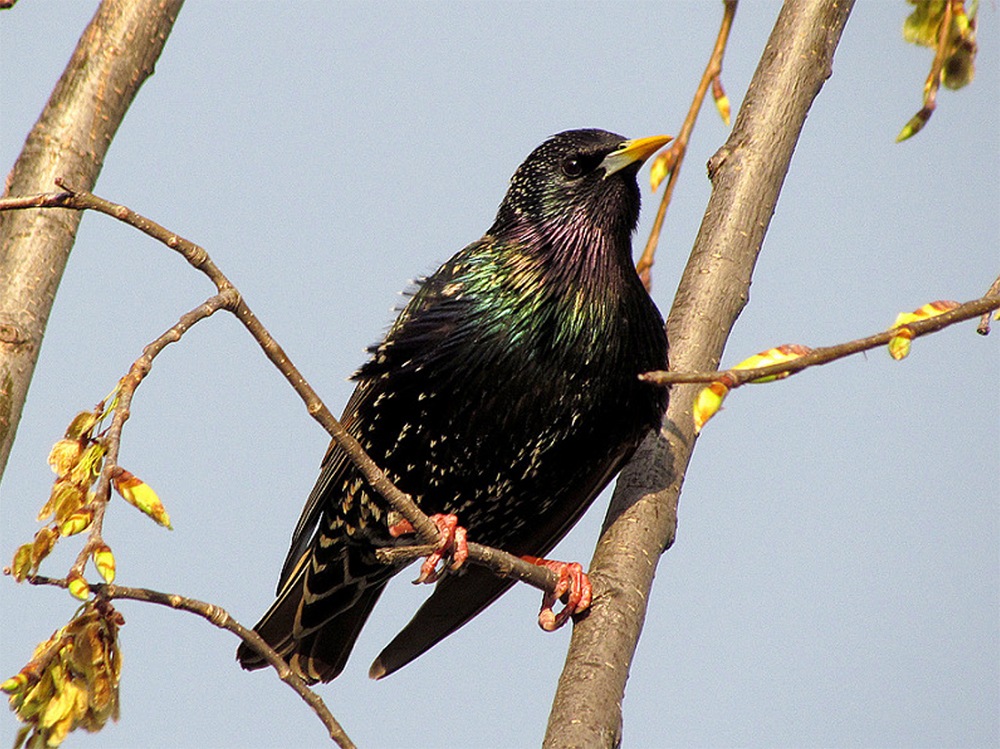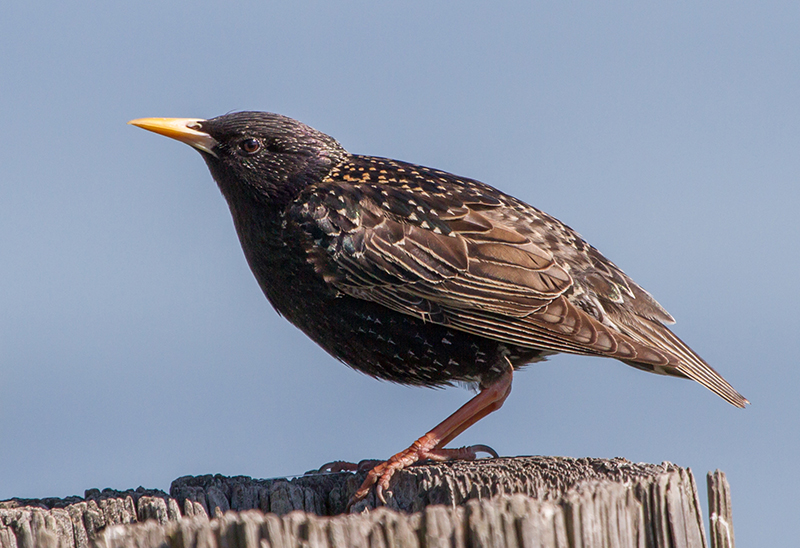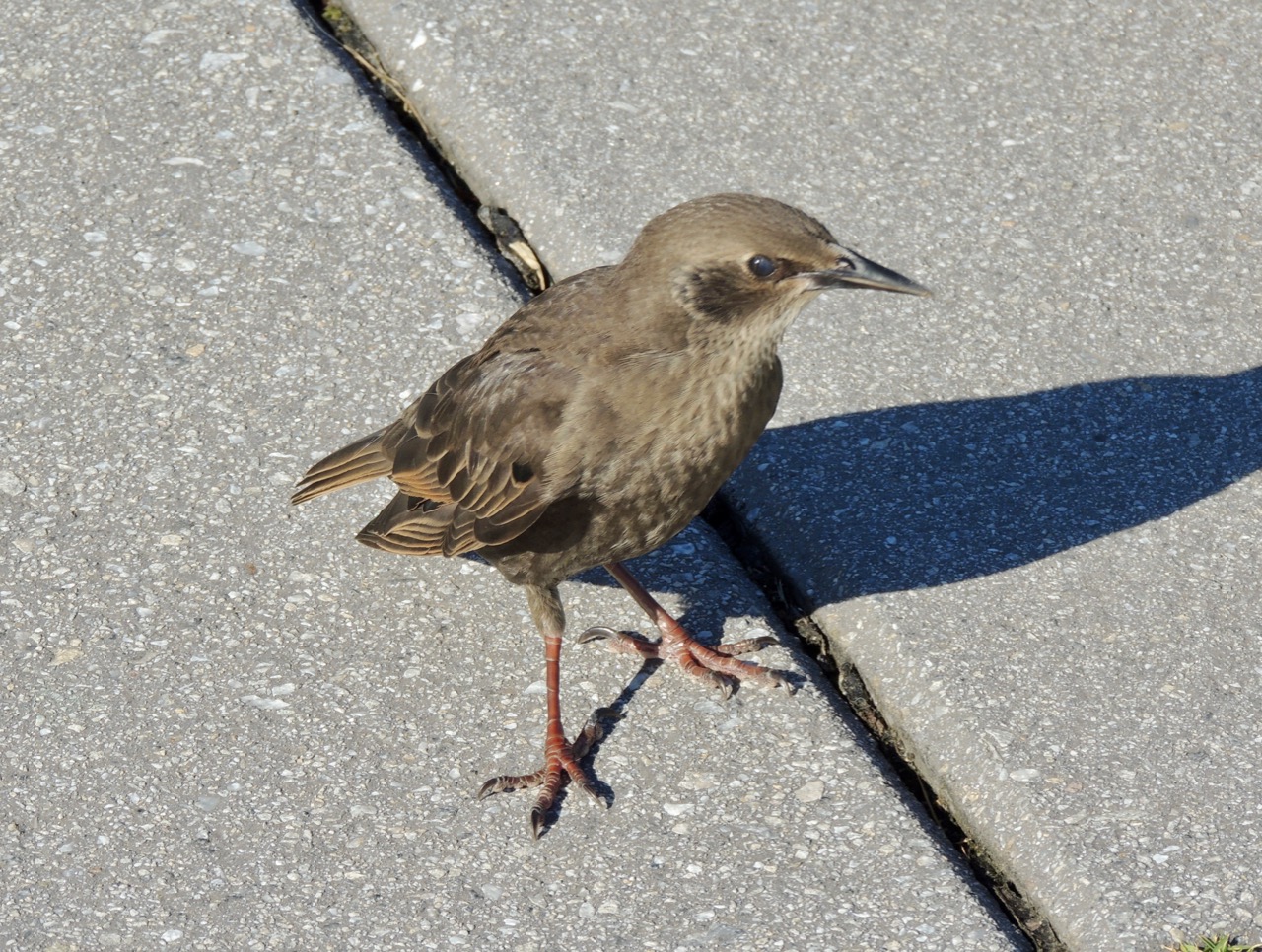| Non-native Species | |
| Year-round Resident |
European Starlings are a non-native bird species at Monticello Park.
Where to See Them in the Park
The park does not have a lot of starlings. They usually stay high in the trees, and they have probably bred in the park or the surrounding neighborhood.
Physical Description



Adult starlings are handsome, colorful birds if seen in good light. The plumage on their throat and breast is iridescent. Adults have a bright yellow bill. Some have prominent white spots. These spots are white feather tips that are most prominent on birds in fresh plumages. Adult starlings tend to lose the white spots as the tips of their feathers wear off. The underparts of adult male starlings usually have fewer spots than the underparts of adult females, but the sexes are difficult to differentiate in the field.

Some juveniles look all dark or light brown. Their bills are darker than the bills of adults.

Molting juveniles might have some brownish plumage and some plumage with the "stars" that looks like adult plumage.
Vocalizations
Starlings have a wide range of calls involving clucks and squeals, and one of their common calls sounds like a wolf whistle. They are expert mimics, and among the many sounds they can reproduce are a ringing telephone and human speech.
Hear the vocalizations of the European Starling.
Notes
In 1890, Eugene Schieffelin from the American Acclimatization Society let loose about 100 European Starlings in Central Park in New York City. The goal of the society was to introduce European plants and animals into the US for economic and cultural reasons. At the time, people were not aware of the enormous problems caused by invasive species. The European Starling and the House Sparrow are without question the two invasive bird species who do the greatest harm to native bird populations by stealing their nest sites and outcompeting them for food. They also can be significant agricultural pests. The number of starlings in the United States is now thought to be around 150 million. Starlings were brought to the US from England, but the Royal Society for the Protection of Birds reports that the starling population has been significantly declining in the United Kingdom.
Origin of Names
Common Names: European from their place of origin. Starling from the small white spots (stars) on the plumage.
Genus Name: Sturnus means starling.
Species Name: Vulgaris means common.
European Starling video footage
Return to the Index
